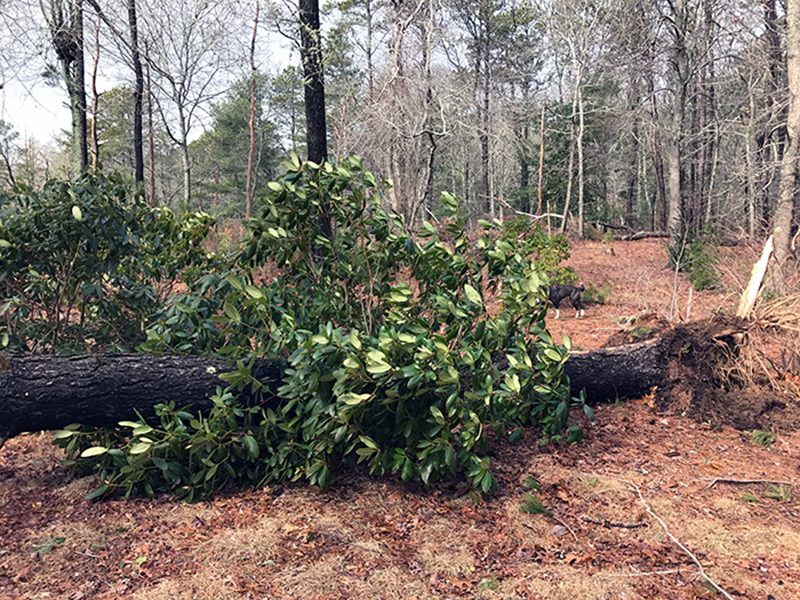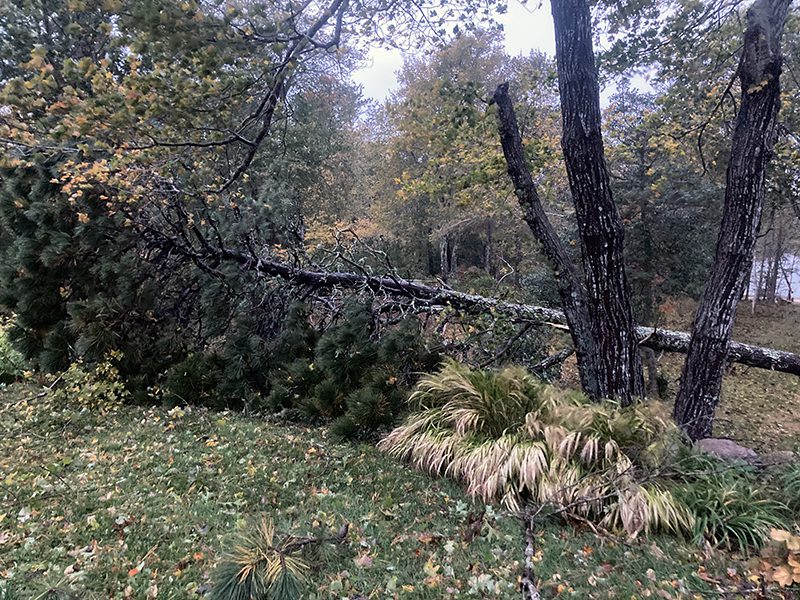Dealing With Storm Damage on Cape Cod
Dealing With Storm Damage on Cape Cod
General Cleanup
The first step after the nor’easter clears and your power returns, is to do a general sweep through your yard and garden. Picking up fallen branches and other plant debris will not only help restore order, but it will allow for a better assessment of serious damage.
Leaning/Flattened Shrub and Small Trees
Pull plants back to their former position and use a staking kit or similar materials to hold them in place. Leave this support through the winter, but remove cables in early summer of 2022, or loosen later in the season, so that they don’t end up choking the plant.
Any plant that had its root system exposed should be covered with soil and top-dressed with an inch of compost. The compost will assist with soil health, and can be covered with an inch of mulch next spring. Wait until April to fertilize such plants with a granular, organic fertilizer.

Salt and Wind Burn
Plants that are burned by salt and wind will shed the most damaged foliage as we go into November. Rinse off evergreens if you haven’t done so. Applying an application of Wilt Pruf in the next two weeks can help protect an already stressed plant as it goes into the winter.
Broken Branches/Split Trunks
Any branches that are broken should be removed from shrubs and trees so that there is a clean cut: jagged wounds are places where moisture collects and diseases can grow. Make cuts slanted, as vertical as possible, so that water can’t pool on that exposed area. No tar or paint is needed for tree and shrub wounds.
Do not use duct tape or cords to try and reattach shrub and tree branches. Plant stems and trucks don’t “mend” like human bones do. Even if the cracked limb seems to live, that will always be a weak place and a location where moisture can collect and fungi/bacteria grow.
Perennials
With the exception of woody plants such as lavender and Russian sage, cut damaged perennials down to improve the look of the garden. Mulching with compost or composed manure now will help plant growth in the spring. Trim off any dead stems or leaves.
A “False Spring”
If there is a warm period that follows a fall storm, some plants respond as if it is spring. Since the hours of daylight are similar to those in April, and we’ve just had a great deal of rainfall, plants might react to the stresses of the storm by flowering as they would in the spring. There is no way to stop this, and although those particular flowers won’t open again in the spring, most plants have other buds that will bloom on time.

Call us if you need further help: 508-775-8703
Subscribe To Our Newsletter
Sign up for our weekly email about sales and events.
